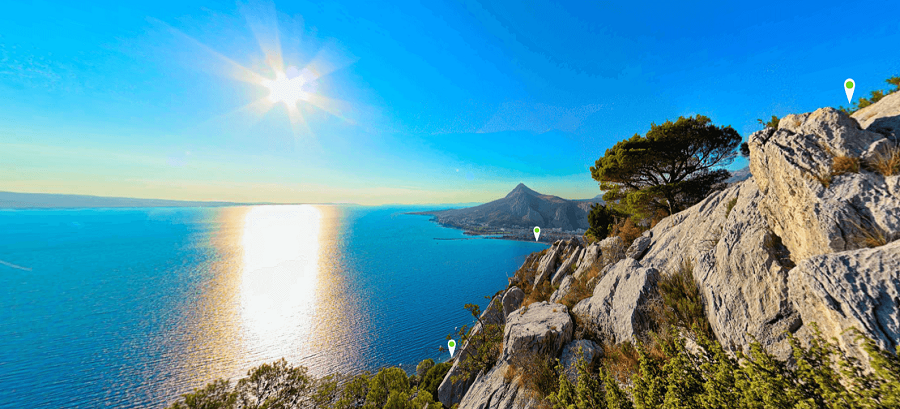Meet HGSS The Croatian Mountain Rescue Service
August 19, 2020 – All weather, all terrain, all year round – meet HGSS The Croatian Mountain Rescue Service, amazing volunteers who will never let you down
They're never far from the news. For the last two weeks, members of HGSS The Croatian Mountain Rescue Service have yet again been on the TV news every night. They're leading the search for a summertime visitor, a Polish hiker missing on Biokovo mountain.
But, watch again this winter and, for sure, they'll be in the headlines once more. Whether, they're scaling mountain ranges in the unbearable heat of high summer, searching underwater caves, flooded rivers or the sea, breaking through wild forest or trudging through metres of snow, they undertake their search and rescue missions over every terrain, in every weather condition, in every month of the year, all across Croatia. And, they all volunteers.
Marc Rowlands meets the head of service for HGSS The Croatian Mountain Rescue Service and three of its volunteers to find out who they are and what makes them do what they do.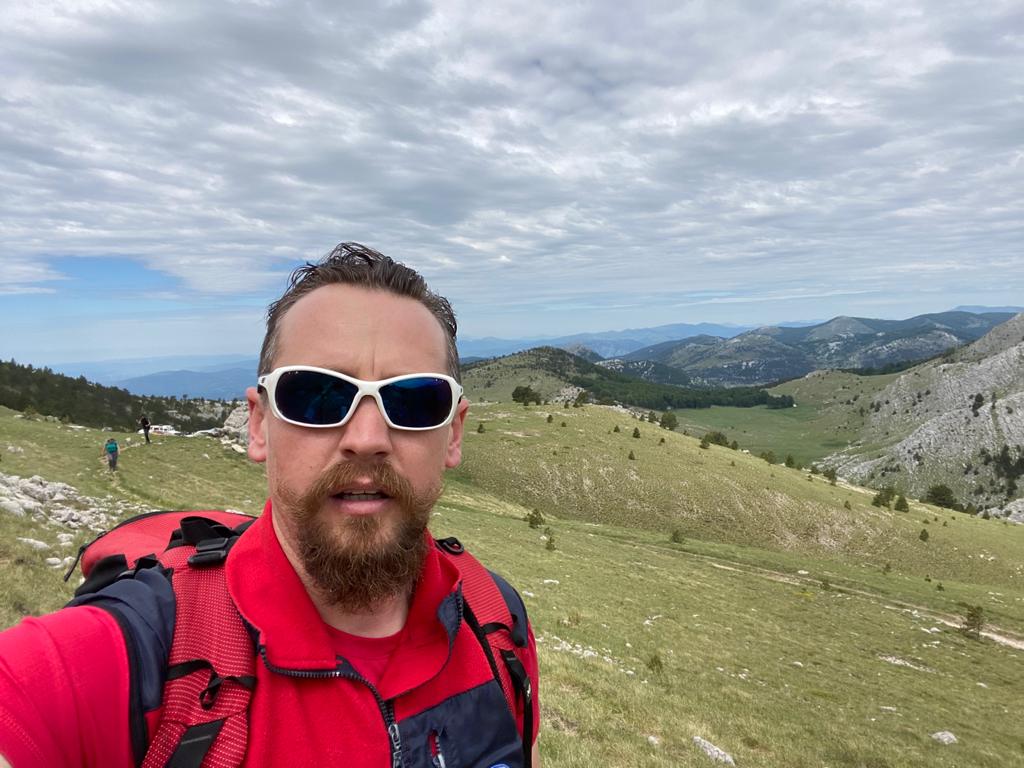
Josip Granić, head of service for HGSS The Croatian Mountain Rescue Service
My name is Josip Granić. I'm the Head Of Service for HGSS The Croatian Mountain Rescue Service. We've had an extremely busy couple of weeks. Being head of service for an organisation like this under such circumstances means you're always on the phone; co-ordinating, talking to outside organisations, members of the press. Communication. It's a 24/7 job, 365 days a year. If people need help, you can't take a holiday. Not at this level of the organisation.
We have around 1000 members. There are 11 paid positions in the main organisation and 25 people we pay to run the administration in each of the teams or stations we have. All of the members who perform the search and rescue are volunteers. We have pilots, surgeons, nurses, students, professors, every part of society.
I'm originally from Kaštela, but my home station is in Karlovac. I've been there for 15 years. I've been Head Of Service for two. Since I assumed the position, I've spent most of my time in the car. I travel all over Croatia.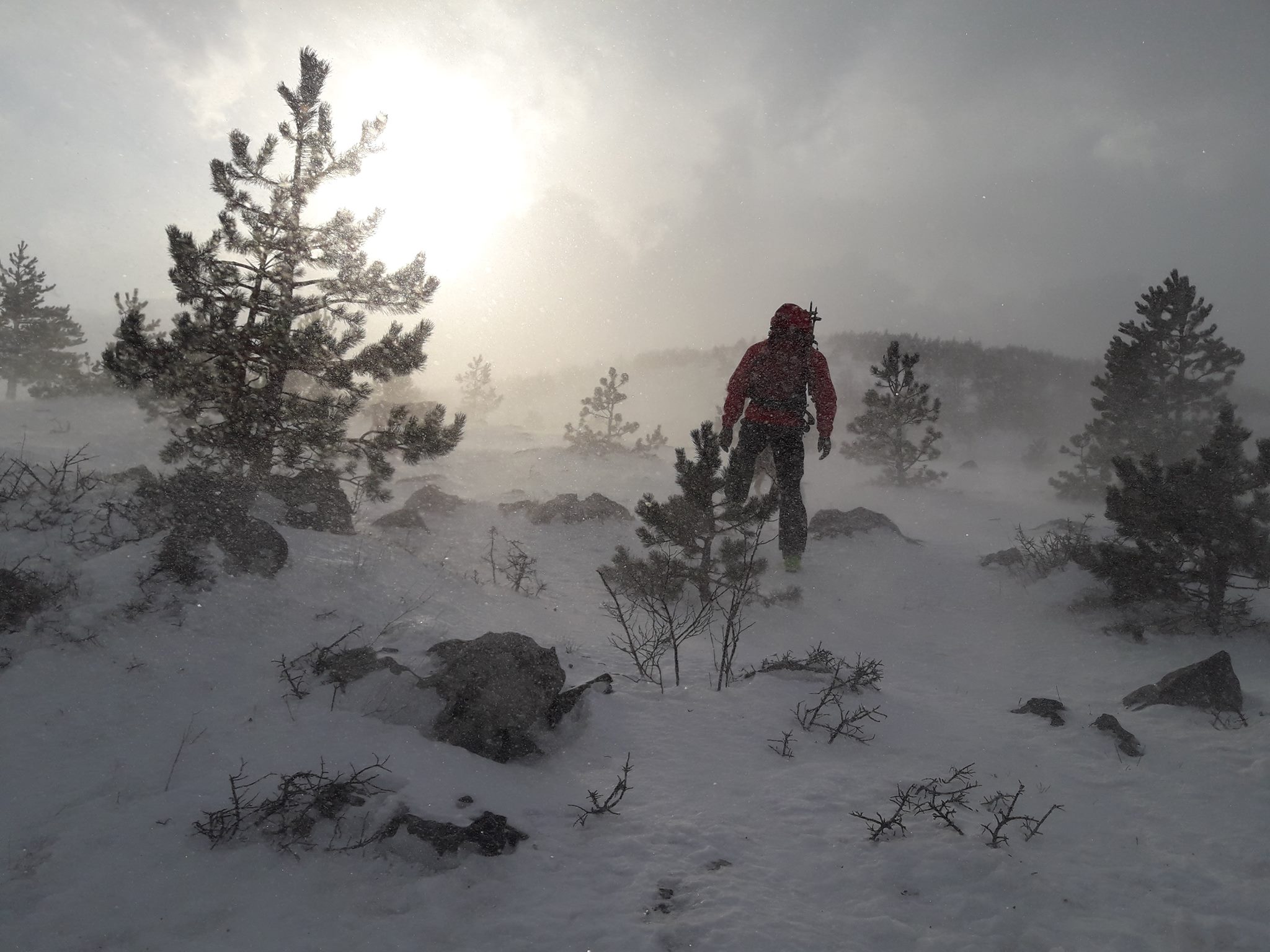
HGSS The Croatian Mountain Rescue Service missions can be hampered by extreme weather conditions © HGSS The Croatian Mountain Rescue Service
To get a certified position as a mountain rescuer in Croatia you all do the same training. It doesn't matter if you come from Slavonia, Dalmatia or Istria, you must have the knowledge and ability to deal with circumstances in any terrain; caves, pits, mountains, on snow, underwater.
Depending on where your station is, the type of call-outs you get could be very different. In Slavonia, 90% are for missing persons - searching forests, rivers, and in floods. We've had a big search on Biokovo mountain for the past 16 days. The stations from Split, Makarska, and Dubrovnik were at first involved, then teams from all over Croatia. It's not the same as Slavonia. The terrain is very different, so you have to be good at a particular set of skills. But, the largest percentage of call-outs is still missing persons. It's 70% of our work nationwide. The other 30% are rescues.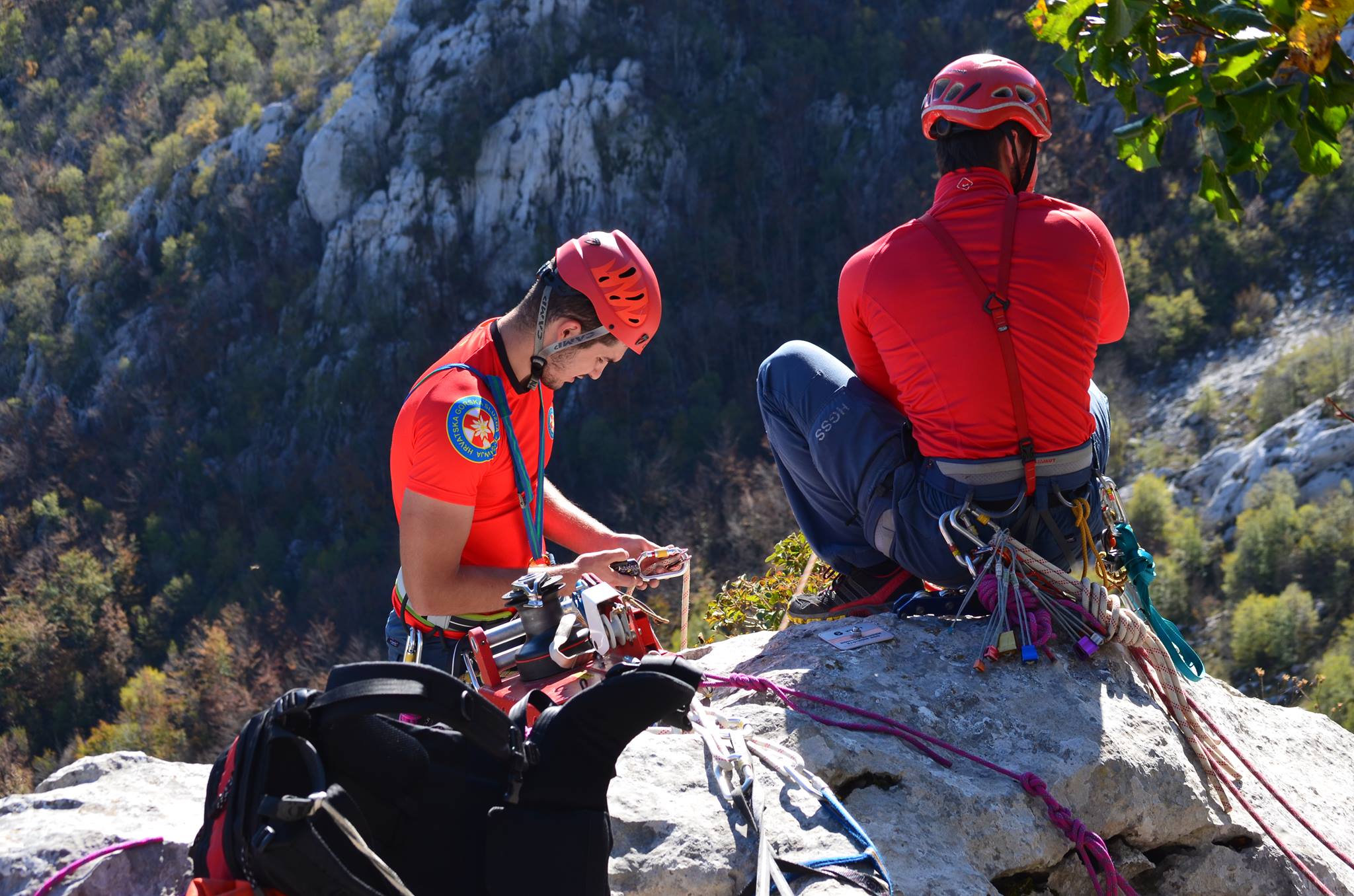
HGSS volunteers are educated to use a wide range of technical equipment. They are trained to operate in all the different kinds of terrain found across Croatia © HGSS The Croatian Mountain Rescue Service
There are usually 800 – 1000 missions a year across the country. We get roughly the same amount of calls in colder months as in warmer months. Only, winter months can be busier. The terrain is more difficult. There are some villages in Croatia – usually where the front line of the fighting was, around Karlovac, Kordun, Lika – and when it snows, it can be almost impossible to reach those places. But, some older people still live there. It can take days to reach them on snowmobiles, then skis, to deliver food or medecine. The other busiest places in winter are the ski resorts - Platak, behind Rijeka, and in Zagreb, on Sljeme. There are teams stationed in those places throughout the snow season.
What's the greatest danger of the job? Almost everything. Nothing in this job is easy. The greatest dangers we face are the same facing those that we rescue - underestimating the environment, nature, the conditions. That's where our training comes in.
In mountain rescue, we separate dangers into subjective, objective and technical. Subjective is the stuff you're guilty of - lack of preparedness, knowledge or equipment. Objective dangers are the ones you can't control, like sudden changes in weather, or avalanche. If you're sensible and informed, there should be no objective danger.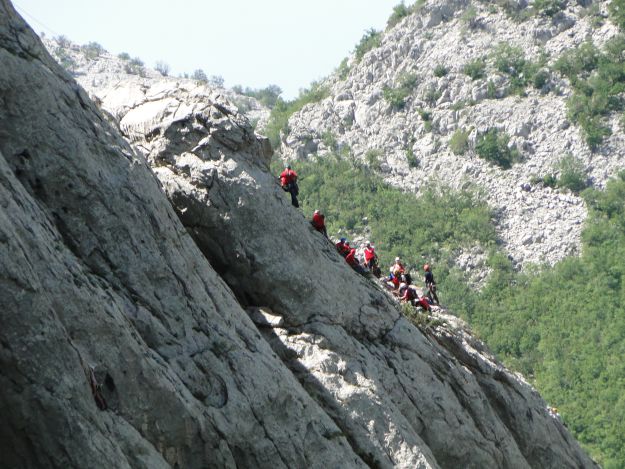
HGSS on a mission, clinging to a steep incline in Paklenica © HGSS The Croatian Mountain Rescue Service "People need to be aware at all times on the mountains. By the time most people think they may be in trouble, they've usually been in trouble for five or ten minutes already" Josip Granić.
80 – 85% of the people we rescue are Croatian. Only 15 – 20% are guests. People from Czech Republic, Slovakia, Poland, (Austria and Slovenia too) tend to enjoy nature more. They like hiking. That's the reason there are typically more rescues for those nationalities than there are for British, Belgian, French, Italian, America, Canadian or Australian guests. I don't remember the specific year, but sometime between 15 and 20 years ago we had a season where 5 or 6 Czech nationals were being searched for or, sadly, turned up dead. The media covered it and ever since there's been this myth that all the people who get into difficulty are Czech.
The question about expensive helicopter rides - why don't you charge the people you rescue - has been here forever. It's like this - if you're a tourist and you have a car accident in Croatia, the fire service, police and an ambulance will come. You won't get charged. We are a tourist country. According to international agreements, we are obliged to make everything safe for residents and guests alike. We are here, just like the fire service and police, to do our part. The Croatian air force is responsible for the helicopter rides and I have to give credit to them - they are crazy good pilots. Amazing. Even if we did charge everyone we saved - and most of the 85% of Croatians we save would struggle to pay - it still wouldn't be anywhere near the money required to run this service.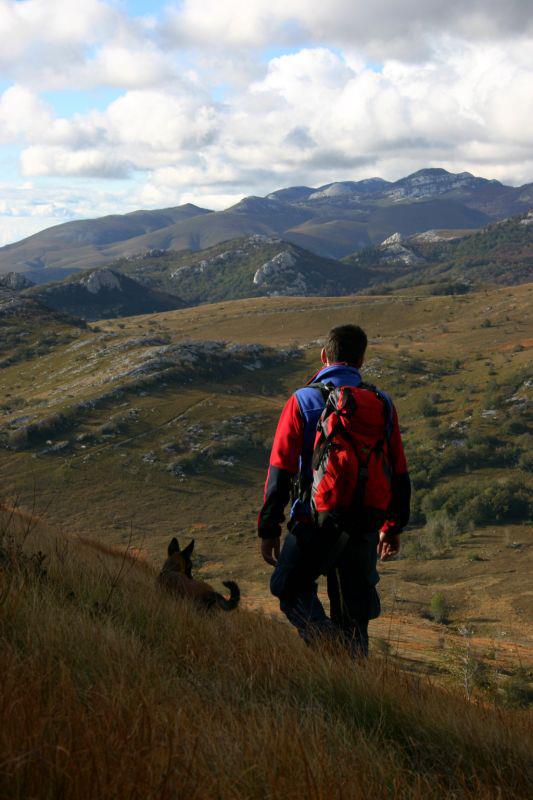
The Croatian Mountain Rescue Service used specially trained dogs on their searches © HGSS The Croatian Mountain Rescue Service
In 2007, I got a new search dog. It came from the Ogwen Valley Mountain Rescue service in North Wales. We cooperate a lot. We were sent out on a job to look for a three-year-old male child who had gone missing near Požega at the beginning of January, wintertime. His grandma was watching him and they were in a house on the edge of the woods. Early in the morning, he was playing with a dog. It suddenly ran into the forest and the boy chased after him. The grandmother didn't see it happen. I found him using my new dog, just after 8 o'clock the next morning. He'd been alone in the freezing forest for almost 20 hours.
Time is really moving fast on a job like that, because it's a kid and because it's so cold. Survival rates in such conditions are not good after 24 hours. When I found him, saw that he was alive, those big eyes looking up at me, it's a crazy feeling. You can't describe it. You can't compare it. A lot of positive emotions.
Every mission is special. We meet them all with the same level of determination and professionalism. But, it's the ones where you know you've really saved someone that stand out in the memory. Not the broken leg, where you transported someone – sure, that's an excellent job. But, when you know you've saved someone's life, that they definitely wouldn't be here now if it weren't for you, that's what makes it all worthwhile.
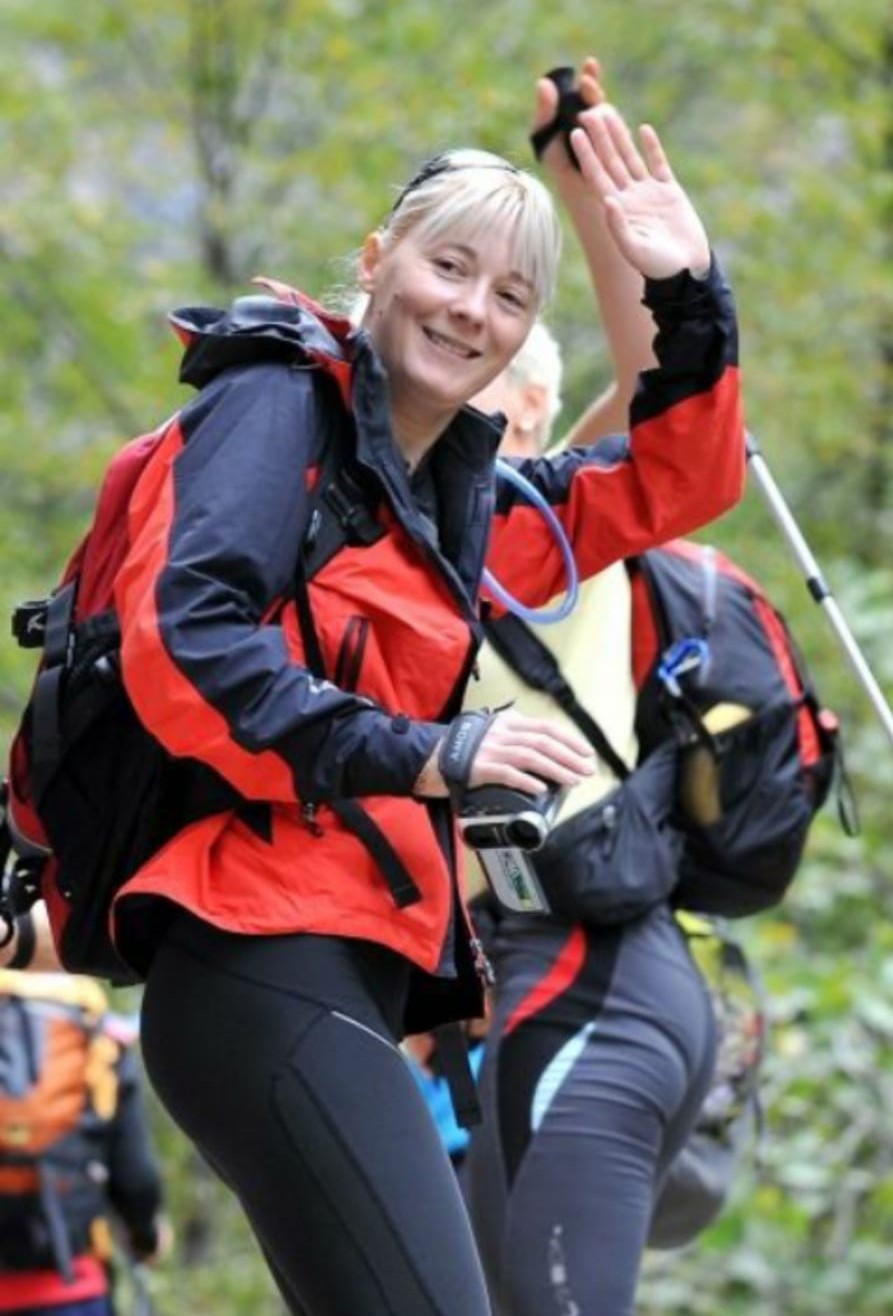
Jana Mijailović, volunteer for HGSS The Croatian Mountain Rescue Service
My name is Jana Mijailović, I'm 48 years old and I'm from Zadar. I finished school to be a teacher, but I never did it. My husband and I run a company that does plastic and aluminium windows for houses.
I started to go into the mountains when I was at high school. I never had the ambition to be part of mountain rescue services – people just noticed me on the mountains. They said I'd be good at it and asked me to join. I met my husband on the mountains. We are both volunteers for HGSS The Croatian Mountain Rescue Service. I've been doing it for 16 years.
I was a member of the first and second all-female Croatian expeditions to the Himalayas. We first climbed Cho Oyu in 2007, then Mount Everest in 2009. Croatia is the only country in the world that has only one successful male climber of Mount Everest, but four successful female climbers. I sometimes work as a guide too. I guess you could say I'm all about the mountains.
Being a climber, an Alpinist, I know that if I get into trouble, it's only my HGSS colleagues who can help. I feel this instinctively. I cannot be in the house, safe and warm, knowing that maybe someone needs help that only I can provide.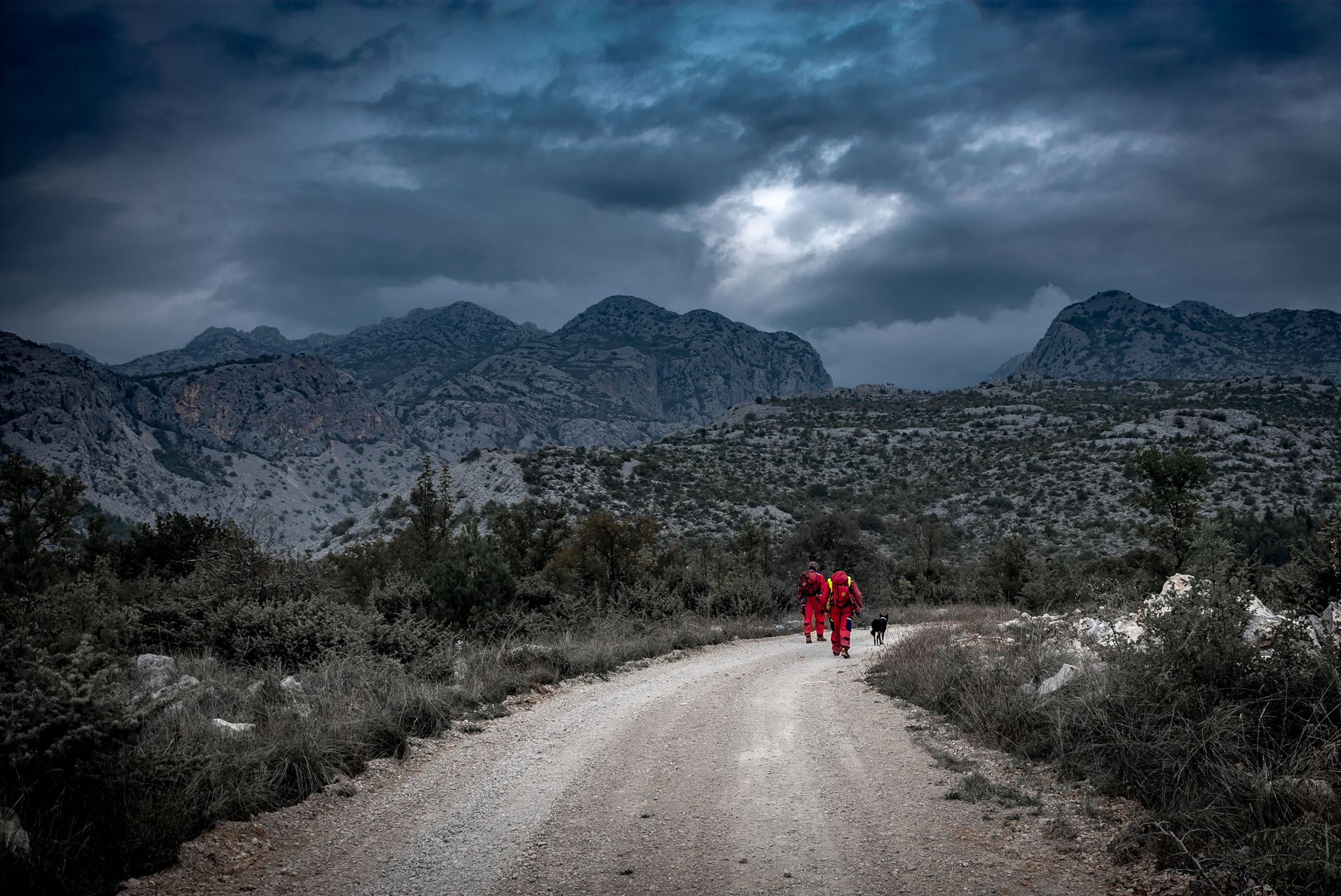
HGSS The Croatian Mountain Rescue Service members entering Paklenica under foreboding skies © HGSS The Croatian Mountain Rescue Service
I've really been on so many expeditions with HGSS. My station are on duty in the season at National Park Paklenica and I'm now the coordinator. Climbers from all around the world come and so there are many interventions. None of them are easy because the terrain is incredibly difficult. You really have to be in shape and know the techniques inside out.
I'm very proud of my statistics. Everyone I've rescued, who was alive when I reached them, is still living today. Unfortunately, not everyone we reach is alive when we arrive.
I remember one time, my husband and I were having dinner. We were arguing about the techniques and knots for moving a stretcher down a vertical climb. The training is so intense, you really have to know it well, and I guess that's just the kind of people that we are, that we would be arguing about it in our free time. Ha! He told me, "Why do you care? You'll never have to do that," because usually, it's really strong guys who do that specific job. If you're on a 400-metre-high section of rock, it really takes a lot of muscle.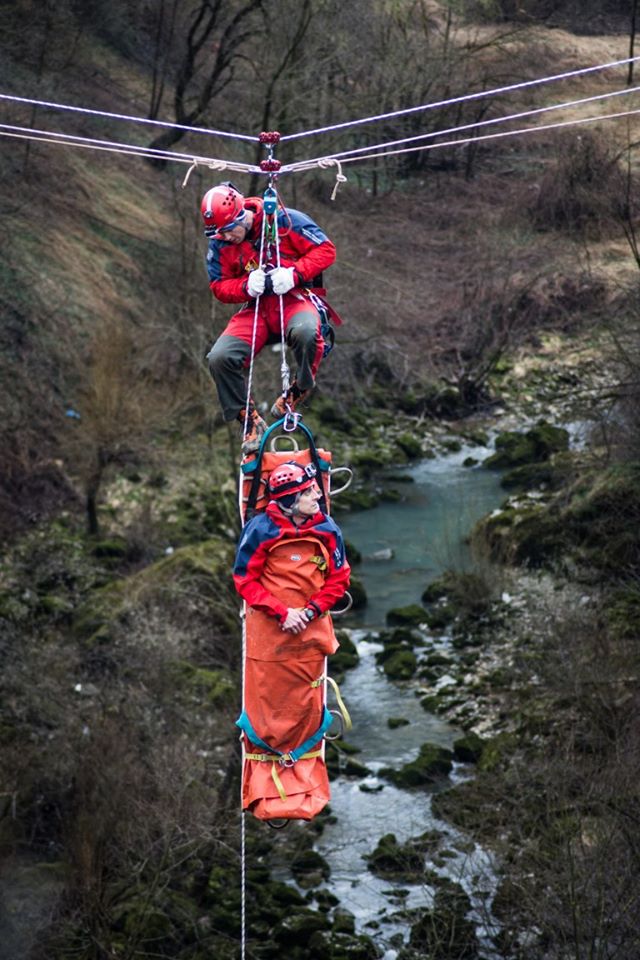
Ascending from a valley floor or descending from a mountain peak with a stretcher is a technically difficult operation, often hindered by darkness and adverse weather conditions. It requires a lot of training and a lot of muscle © HGSS The Croatian Mountain Rescue Service
In the evening, just two days later, we were called out to rescue an Italian guy who broke his leg on Anića Kuk. It's a really mighty part of the stone. And the leader of the expedition asked me to go on the stretcher. They pull you down on the ropes and you have to push very hard to keep the stretcher, the person you're carrying and yourself away from the rock, while balancing the weight of all three. It was dark, raining and with lots of Bura, the incredibly strong wind that sometimes hits us. That's probably my most memorable rescue.
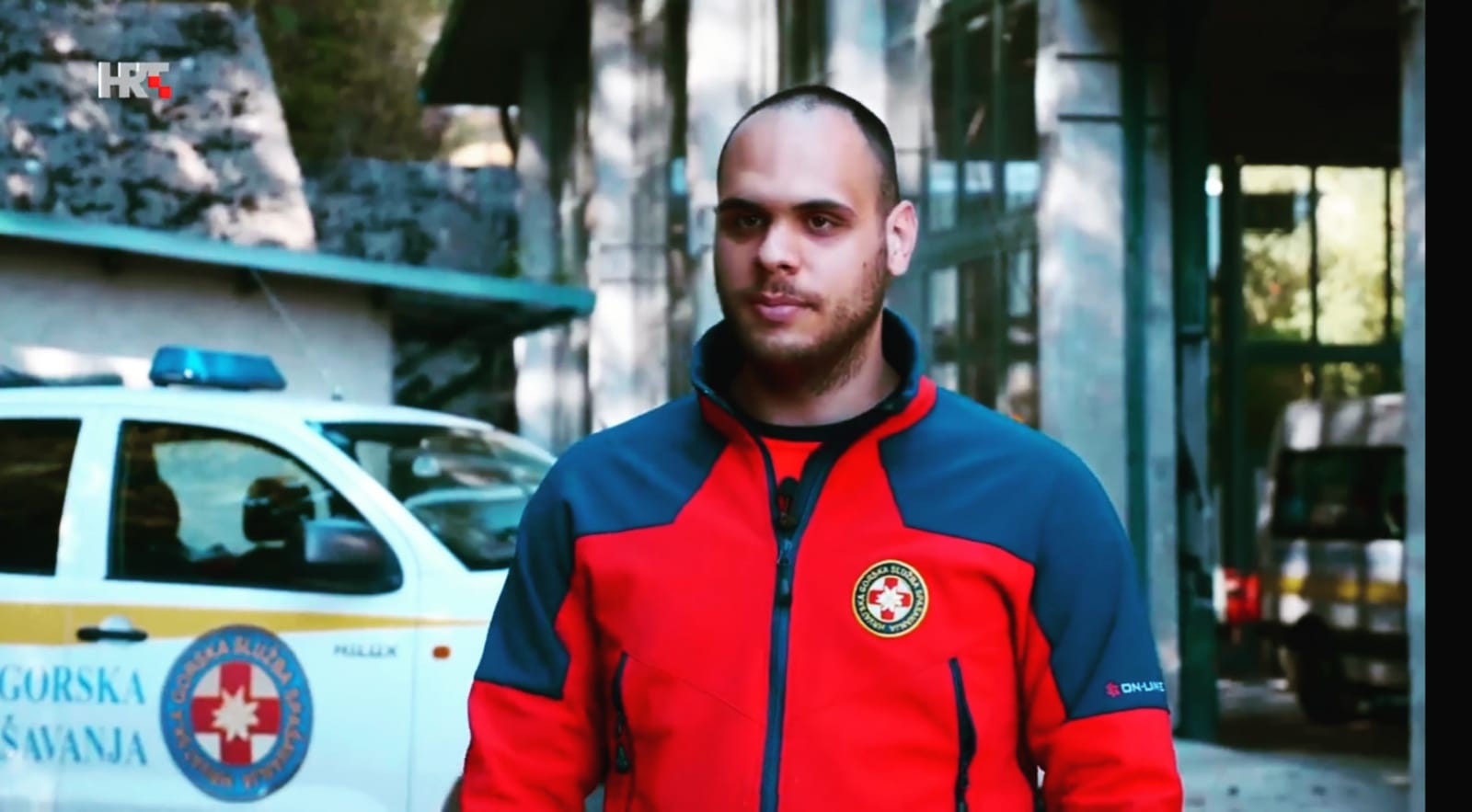
Petar Prpić, firefighter and volunteer for HGSS The Croatian Mountain Rescue Service
My name is Petar Prpić, I'm 25 years old and I'm from Hrvatska Kostajnica, just on the Croatian-Bosnian border. My station is in Novska. In my full-time job I'm a professional firefighter. I guess I have two dangerous jobs. Well, one job and one hobby.
I've always been interested in the outdoors – mountaineering, hiking, canoeing. But, that's not why I joined HGSS The Croatian Mountain Rescue Service. I just wanted to help people. I don't know, I guess it's just something in me.
We have a lot of rivers in our area. During the times of flood, we get a lot of call-outs. Our part of the country has a high percentage of elderly people in the population. A lot of them live in small villages, on the edge of the forest. We get a lot of call-outs for searches. Especially in the autumn when people go out looking for chestnuts or mushrooms. But, like all the stations in Croatia, we are here year-round if there are any actions in other parts of the country that need us.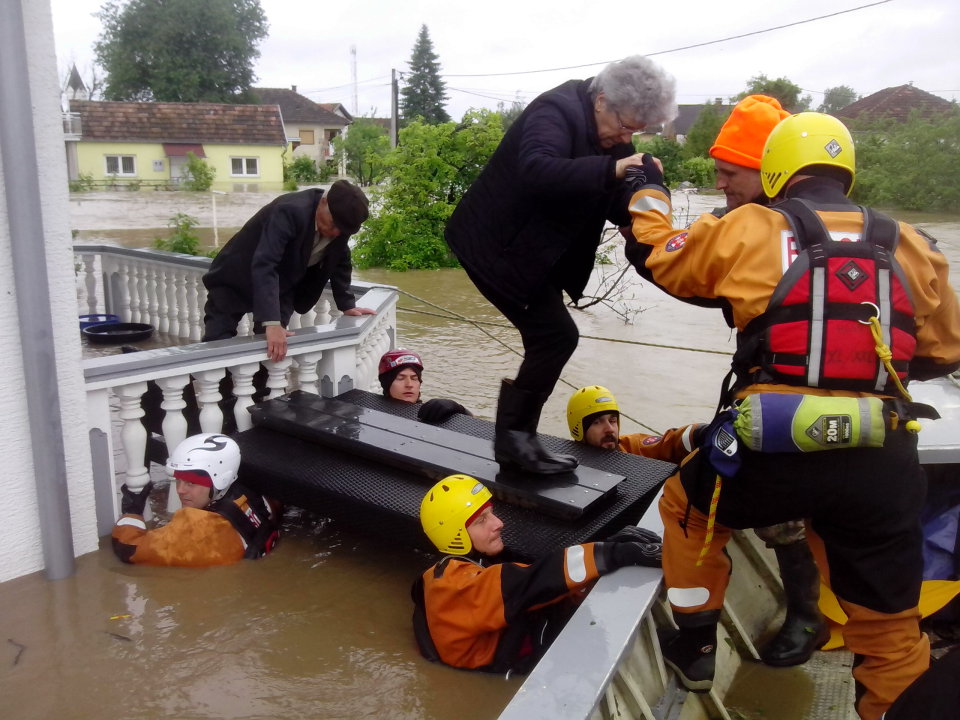
In some areas, HGSS The Croatian Mountain Rescue Service are frequently called out in response to flooding. This picture shows HGSS members on operation during the 2014 floods. In that year, flooding across the whole region was so bad that HGSS members operated not only in Croatia, but also donated their services to neighbouring Bosnia and Serbia © HGSS The Croatian Mountain Rescue Service
I was just on the search in Biokovo. The head of service called me and asked me to go. I first had to get some free days from my job. I called my boss, Zvonimir Ljubičić, chief of the fire department. He's great, very understanding, and he gave me permission. Two years ago I was called to Rab. Very hard operation, very difficult terrain.
Late last summer, we were called out to look for an older man near Glina. It was around 11 o'clock in the evening. He'd gone to look for mushrooms in the afternoon and never came back. Police were there and they sent for us.
The man had a cell phone on him, but there was no signal. There was no location given off the phone. We were a team of four, split into two teams. We went up into the woods above Glina and concentrated our search on areas where we could see there was no telephone signal on our phones. We were yelling in the dark. After an hour of search, someone answered. He'd been missing since 2pm. We found him at 2am. He was just lying there, uninjured but unwell, unable to move.
The reason it sticks in my mind is that the next day, in the morning, his daughter called me. She was so thankful, so emotional. For sure we saved his life. None of the other emergency services who were present could find him. It was down to us. We finished the operation at about 6am and then all four of us had to go immediately to our regular jobs.
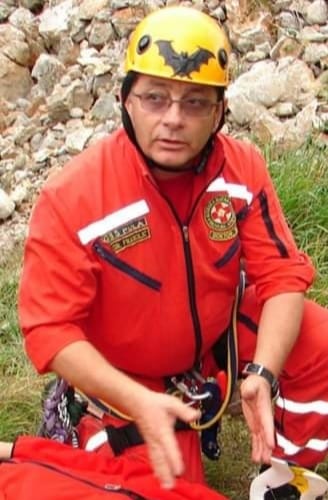
Mario Franolić, physician, ex-commando and volunteer for HGSS The Croatian Mountain Rescue Service
My name is Mario Franolić and I'm 60 years old. I'm the chief of the mountain rescue service in Istria. I travel throughout Croatia because I'm also an instructor for the medical commission of HGSS. I was born on island Krk. I'm based in Pula although I work in Rijeka. I travel a lot between the two. I've been with HGSS The Croatian Mountain Rescue Service for 18 years.
In my day job, I'm a physician. I am a senior mentor at the Institute for Underwater and Hyperbaric Medecine in the Clinical Hospital Rijeka. I'm an expert in my field of emergency medecine. I've been doing it for almost 30 years.
When I was young, I trained to be a physician in Belgrade. It was then the best medical faculty in Yugoslavia. At the same time, I also started spelunking (cave exploration). I've been doing it since 1978. Later, I was a physician in the military underwater commando unit. I lived in Austria for five years, but when I came to Pula, they were just starting the HGSS The Croatian Mountain Rescue Service station here. They asked me for help because they didn't have any medical professional on the team. I accepted. It would be a waste not to use all these skills I have.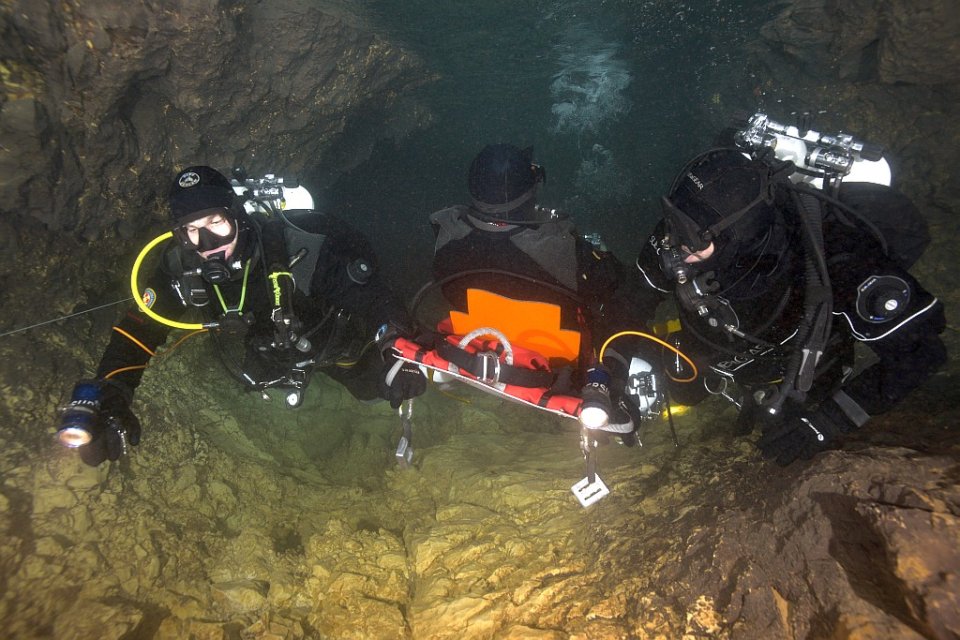
Specialist teams from HGSS are trained in underwater rescue from caves. Such caves exist all over Croatia in the karst rock, and also on some islands © HGSS The Croatian Mountain Rescue Service
Sometimes, our status as volunteers can give us problems. Although we have official duties, we are more like an NGO than something like the police. There can be legal implications. I remember one situation, very acute because a paraglider fell from the sky. None of his colleagues saw him fall. Paragliders go into the air together, but then they each branch off to do their own thing.
We had no idea about the location. We started from the last point of sighting, knowing that it could be very far from the place where he actually fell. But, we had to start somewhere. We had one mobile phone signal direction. But, you need three in order to locate someone. We only had a line on the map.
In the past, HGSS The Croatian Mountain Rescue Service sometimes had difficulties because the telephone companies wouldn't give us the information we needed in order to triangulate the position of a missing person. They would only give it to the police. But, it's a race against time. We searched for this man all day and all night. In the morning, some Croatian paragliders made private contact with a guy from the phone company. They begged him to release the information we needed. Although he could lose his job, giving such information to private citizens, he did it.
We found the man about 150 metres from where we were. Sadly, he was already dead. It was very small comfort to see that he had died instantly, on impact. It's unbearable when you reach someone you could have saved if only you had got there quicker, especially in an instance such as this, where we were hindered by a lack of information that was available. I think it moves more quickly now, but still we have to go through the police.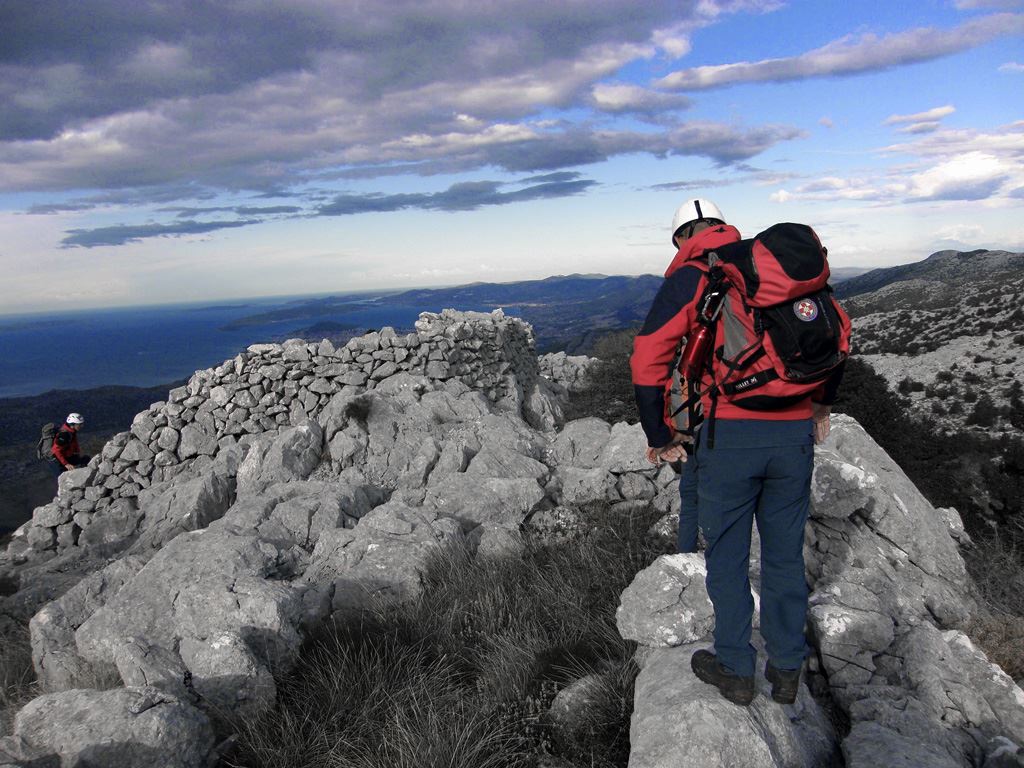
© HGSS The Croatian Mountain Rescue Service
One of the most emotional operations I went on was around five years ago, the rescue of a young girl - maybe two and a half to three years old – who got lost in the woods in a small place in central Istria. She chased into the forest after some dogs around 10 or 11 in the morning. The family saw immediately that she had disappeared and started to search. About two hours later, we were called out. It was impossible for the family to find her.
About 300 people came – my station, the Rijeka station, hunters, firemen, police and volunteers. In such an operation, the police are the lead service. But, 99% of the time they leave the organisation of the search to HGSS The Croatian Mountain Rescue Service. We are the only organisation who is very well educated in organising searches. When other people do searches, they use intuition. But, people all have different intuition. It can be chaotic. We are highly trained for this. There are procedures, recognised internationally, that we follow. We found her early in the morning, at around 7 o'clock. The dogs were lying on each side of her, giving her warmth.
All photos courtesy volunteers and HGSS The Croatian Mountain Rescue Service
First Awards Presented at 54th Dalmatian Klapa Festival in Omis
As Morski writes on the 18th of July, 2020, the first competition evening of the 54th Dalmatian Klapa Festival in Omis for this year, given the name the Evening of New Compositions, was held on Friday, July the 17th, at Stjepan Radic Square in Omis.
At the very beginning of this year's Dalmatian Klapa Festival, with the sounds of the song Na omiskoj stini (On the rocks of Omis), the official anthem of Omis, the Dalmatian Klapa Festival flag was raised by Bozo Mimica - Điran, a longtime member of the Festival Council. The Mayor of the City of Omis officially declared the 54th Omis Dalmatian Klapa Festival open.
Eleven Dalmatian klapa bands performed twelve new compositions and the winners were decided by a jury consisting of Rajmir Kraljevic, Mirjana Siriscevic, Ivana Tomic Feric, Blazenko Juracic and Marijo Krnic. The well known Klapa Kase from Dubrovnik had the most reason to rejoice, winning the award for the best performance of the popular song Spanjola. The same composition was declared the most successful and its authors, composer Vicko Dragojevic and lyricist Vedran Bonacic, won the prestigious Golden Plaque.
The second prize went to the composer Zivko Kljuca, who composed the song U oni dan based on the text by Ruzana Kovac. The song was performed by Klapa Vincace from Novi Vinodolski. The third prize was shared by the song Dozivju nas glasi, the music and lyrics of which were written by Roko Radovan. The song was performed by Klapa Korda from Lumbarda. The composition Ne umiru kapetani/Captains don't die, which was written by Vinko Didovic, with lyrics by Pjero Miric, was performed by the local klapa band Klapa Oneum.
The lyricist Pjero Miric is also the winner of the Drago Ivanisevic plaque for the best text. Due to the small number of spectators owing to the proper observance of the current epidemiological measures in force across Croatia as we battle the coronavirus pandemic, the award for the most successful composition according to the votes of the audience wasn't awarded. The programme was hosted by Edita Lucic Jelic.
For more, follow our lifestyle page.
In Croatia Public Art Is Destroyed And Replaced With... Nothing
July 17, 2020 – Zagreb's residents have voiced outrage at the removal of a beloved work of art, replaced by nothing. But is this really anything new for Croatia Public Art?
Over the last 24 hours, residents of Zagreb have voiced their outrage at the removal of one of the city's best-loved pieces of street art. 'The Little Prince' had sat in Čulinečka ulica in the Dubrava neighbourhood since 2016. But now it is no more.
Inspired by French writer Antoine de Saint-Exupéry's children's novel - one of the world's best-selling and most-translated books – the mural was placed at the end of a busy underpass. As such, it was a colourful piece of Croatia Public Art, a welcome for motorists entering the drab, grey concrete of the city, stuck in traffic, on their way to another grueling day of work.
Updates to the story have revealed the culprits to be fans of the local football team, Dinamo Zagreb. They had been given permission to paint yet more murals of their logos and slogans on the rest of the underpass, under the provision – according to neighbourhood authorities who granted it – they did not touch the existing artwork. But they did. Where once was placed an inspiring and cheering mural, there now sits nothing.
Representatives of the largest organised group of Dinamo supporters – known as Bad Blue Boys – have, at the time of writing, failed to comment on the affair. Perhaps they weren't aware of the Dubrava sect's actions? They certainly don't appear capable of reprimanding their own members. So much for claiming to be 'organised'. Or perhaps they're just exhausted by all the bad press?
In recent memory, the Bad Blue Boys have repeatedly hit the headlines and, to be fair, not always for such reprehensible, thoughtless behaviour. Following Zagreb's 2020 earthquake, supporters came together as some of the first responders at the scene of a hospital, where they assisted in removing infants from the damaged wards. Bravo! But, then young supporters were pictured with a banner bearing the scandalous words “We will f*ck Serbian women and children”
Representatives from the Bad Blue Boys were quick to denounce the disgusting banner. Bravo! However, they implied the wording was only problematic as it pertained to pedophilia. Eek. And, within 24 hours, the same voices were raging about anti-Croat slogans used by Serbian football fans, in that classically Balkan method of argument where you ignore the issue at hand, point somewhere else and say “But, they are much worse!”
With the removal of 'The Little Prince', this time they seem to have gone too far. All but the most insecure and ardent of supporters have turned on the Bad Blue Boys, labelling them hooligans, idiots and selfish. Comments under news items covering the story are filled with angry criticism for the football fans.
“They like to paint themselves as hooligans who we should all fear,” one angry Zagreb resident who wished to remain anonymous, told TCN, “but really they can only paint their retarded logos. They piss all over the city like feral dogs marking their territory. Their murals are already on walls everywhere, why destroy this art? Everyone loved it! They are not even real football fans, let alone hooligans. They boycotted (attending) because of the club's (allegedly) corrupt management, but as soon as the club released 1 Euro tickets, stadium was again full. For 20 years they shout and spray (paint) fake anger over corruption at the club, but they don't do a thing about it. The same people are still in charge and the stadium is full of these so-called fans. Can you imagine that happening in a football club in your country, in Spain, in Argentina, in Brazil? No. Impossible. Such corruption would not last a year before fans removed them. The corrupt would be assassinated if that's what is needed (to remove them). They are not Bad Blue Boys, they are Big Blue Babies. They are dogs with loud voice but absolutely no teeth”
The anger of Zagreb residents is palpable. But, can we blame the pointless and saddening idiocy of this affair on the Bad Blue Boys? Like the disgusting slogan on the teenage supporters' banner, such rhetoric does not appear out of thin air. Actions like these are sadly learned. And the country has an established history of needlessly destroying Croatia Public Art and replacing it with... nothing.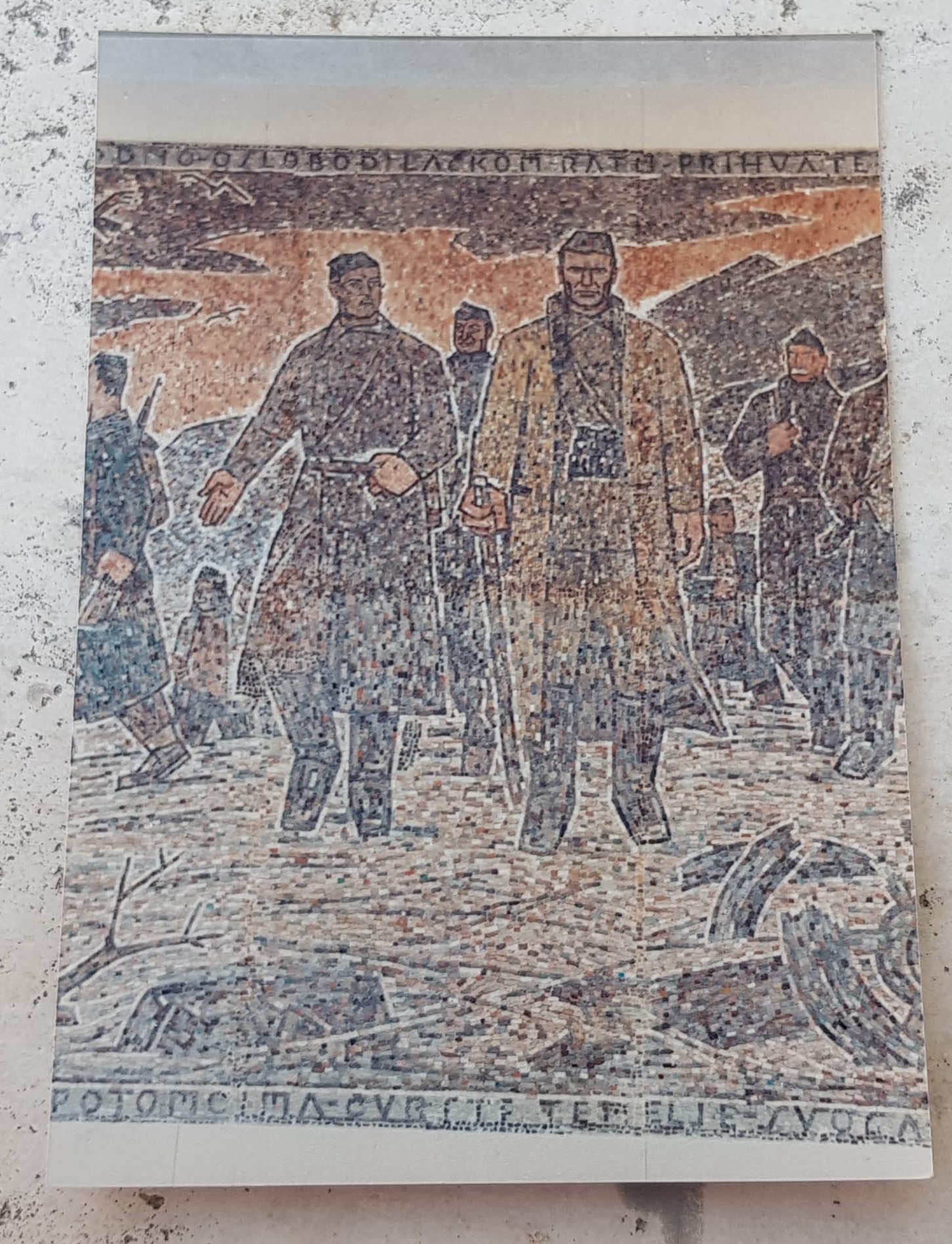
A photograph of a small section of Ivan Joko Knežević's mosaic in Omiš, the only record in colour remaining of this piece of Croatia Public Art © Knežević family archives
The long-cursed bottleneck on the Jadranska magistrala (Adriatic highway), the Dalmatian town of Omiš, is now fighting to attract the kind of footfall that its neighbours Makarska and Split experience during summer. And, sitting at the mouth of the Cetina river, it sure does have a lot to offer. However, one thing it no longer has to offer is the amazing mosaic created by renowned local artist Ivan Joko Knežević on one of the town's most prominent squares. Today, the square is known as Trg Franje Tuđmana (but, of course it is – it's probably very close to a street called Ante Starčevića too) and where the beautiful mosaic once stood, there sits a blank wall. This piece of Croatia Public Art was removed under a wave of nationalist sentiment following Croatia's war of independence, solely because one of the local scenes it contained depicted Partizan soldiers (who fought to recapture for its inhabitants this very area from the Nazi-allied Italians it had been gifted to). Now, there is no reason for tourists to come to this square other than the drinks on offer. They sit and sip and look at nothing.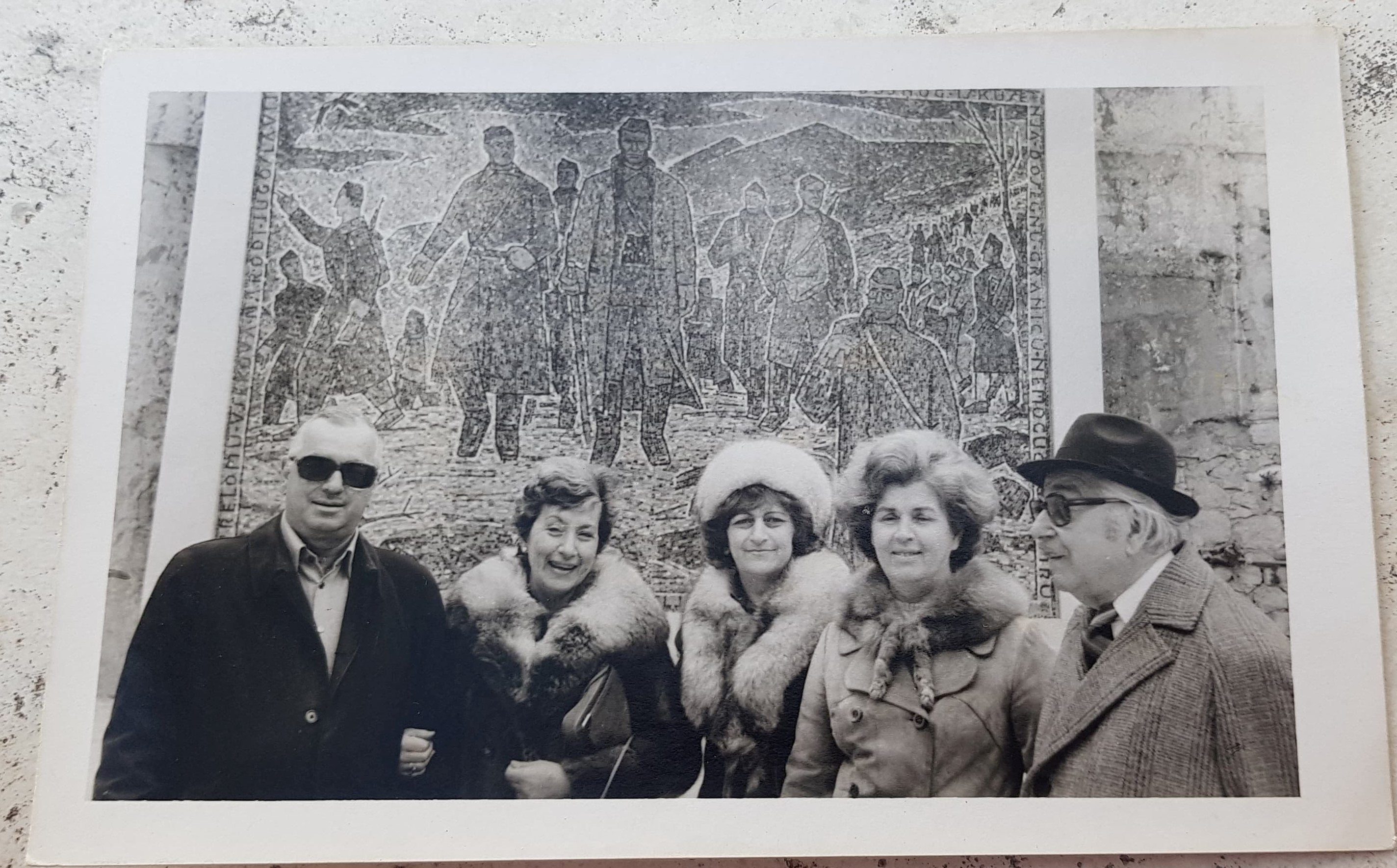
The wife of Ivan Joko Knežević and friends, standing in front of the mosaic in Omiš after the unveiling of this work of Croatia Public Art © Knežević family archives
This is not the only time the work of the rather brilliant Ivan Joko Knežević has undergone such a fate. Croatia's only true master of mosaic operating in the 1950s, 1960s and 1970s, his incredible 'Narod u svojoj težnji k stalnom napretku' mosaic was a proud feature adorning the walls of the former military hospital in Križine, Split until Croatian independence. Thereafter, it sat behind a closed curtain for 15 years until some of the city's more enlightened residents insisted the curtain be removed. Happily, this work of Croatia Public Art is now back on display.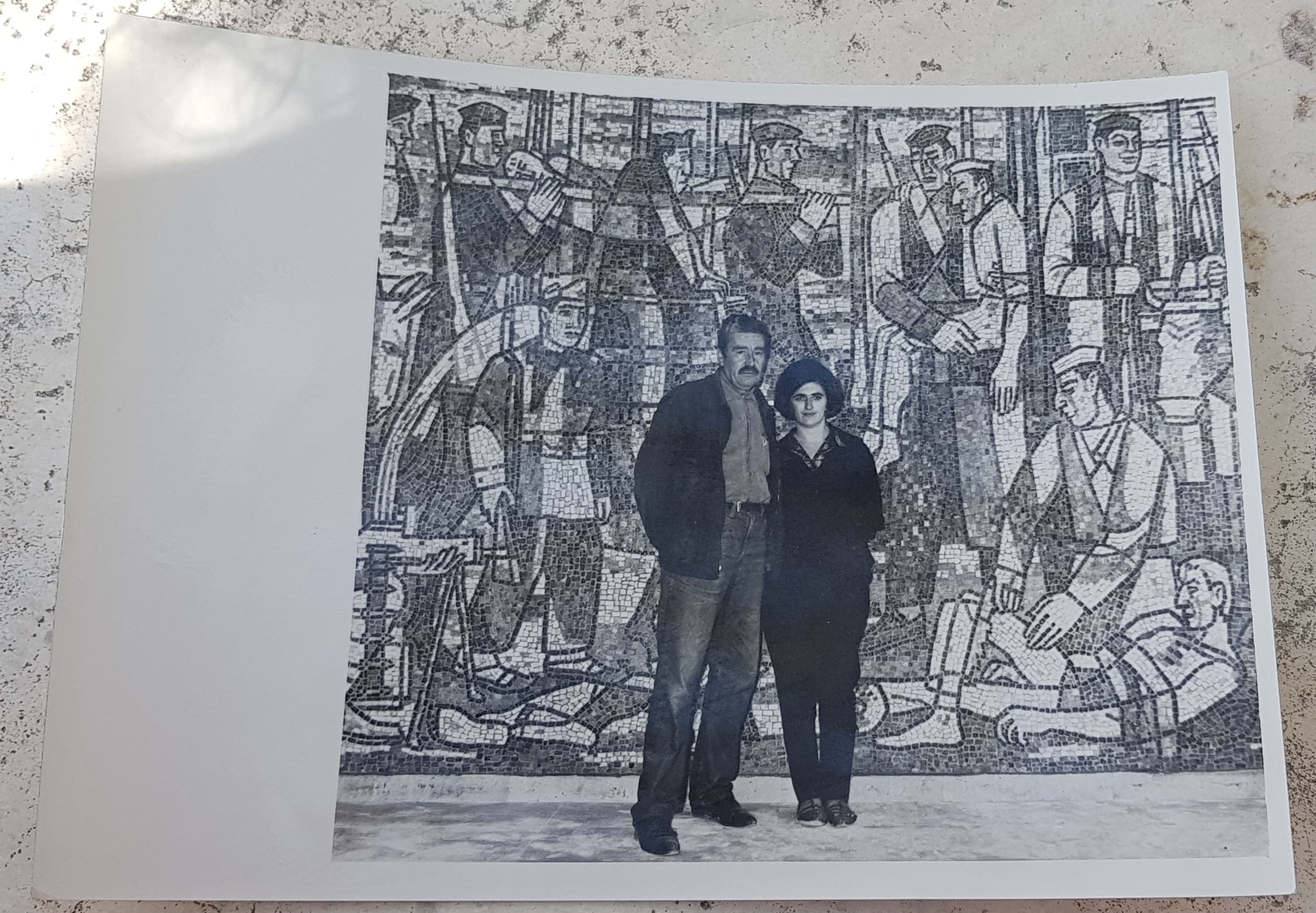
Ivan Joko Knežević standing in front of his Croatia Public Art mosaic at the former military hospital in Split © Knežević family archives
Spomenik narodu-heroju Slavonije (Monument to the hero people of Slavonia) was a former World War II memorial by Vojin Bakić. So gigantic was this stainless steel monolith of gratitude that it took over a decade to build. After completion, it was the largest postmodern sculpture in the world. It took a concerted but incomparable five-day effort by bored soldiers with leftover explosives to destroy it following the end of Croatia's war of independence. Today, such structures of art are recognised and hugely appreciated by many. Fans from all over the world travel to see them. Located in Kamenska, Brestovac, one of the most deprived areas of Slavonia, there is now nothing for the tourists to come and see except the lubenica (watermelon) growing slowly. So, they do not come.
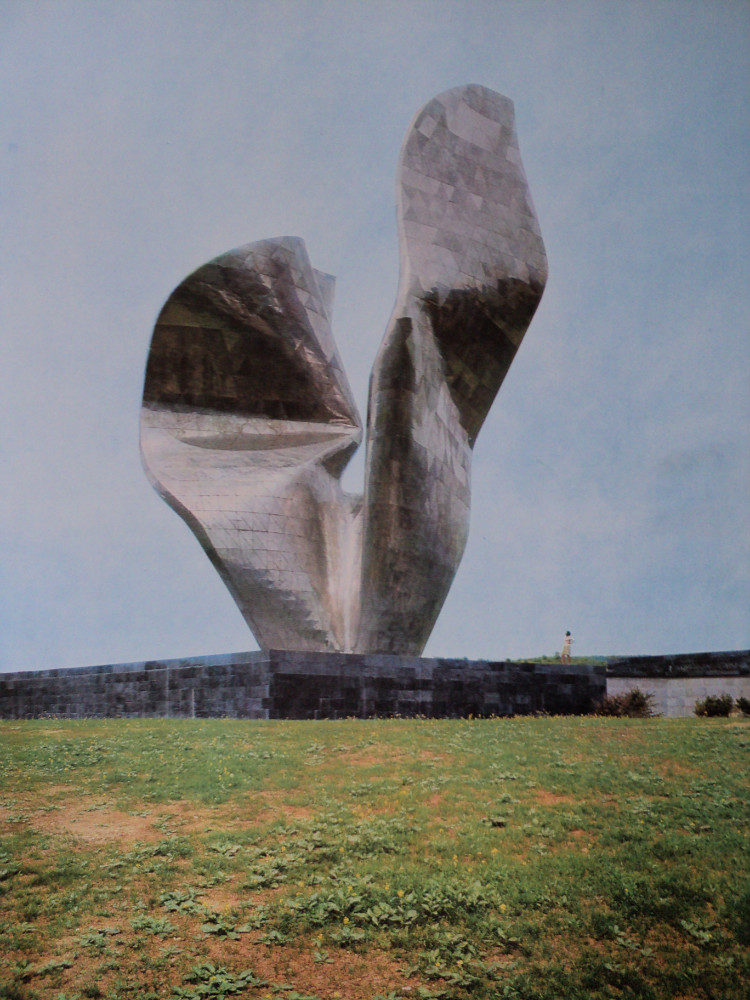
Spomenik narodu-heroju Slavonije (Monument to the hero people of Slavonia) by Vojin Bakić. Built over 10 years, it was the largest postmodern sculpture in the world. It took five days to destroy with explosives © Public domain
Of course, the removal of the latter examples are rooted in a change of regime and political climate. Whether you approve of the recent removal of statues of slave traders in England in response to the Black Lives Matter movement, the famous toppling of Saddam Hussein's statue following the liberation of Baghdad or the destruction of world heritage sites like Palmyra by Isis depends only on your personal perspective and politics. It is all the same thing. The removal of Zagreb's 'Little Prince' just seems like thoughtless vandalism in comparison.
Neighbourhood authorities in Dubrava have promised the return of the much-loved mural, a feat complicated by travel restrictions as its author lives in Novi Sad, Serbia. For now, city residents will look at nothing and curse the shortsightedness of the 'Big Blue Babies' who removed it. But, can they really be so harshly blamed in a country with a history for such wanton destruction of art that is never replaced?
Tourism in the Corona Age: 10 Virtual Ways to Discover Omis
May 3, 2020 - Tourism is on hold, but most of us have plenty of time. So let's look at the virtual resources available to explore Croatia virtually. We continue our new Virtual Croatia series with the tools to discover Omis.
A few weeks ago I wrote that being a tourism blogger in the corona era was about as useful as being a cocktail barman in Saudi Arabia. I feel less useless now, a few weeks later, and I am encouraged by the number of Croatian tourism businesses who are contacting us wanting to start thinking of promoting post-corona tourism.
One of the challenges of writing about tourism at the moment is that there is nothing positive to write about. With people confined to their homes and tourism in Croatia currently not possible, many have decided to go into hibernation until it is all over.
I think that this is a mistake, and I have greatly enjoyed the TCN series by Zoran Pejovic of Paradox Hospitality on thinking ahead to tourism in a post-corona world. You can find Zoran's articles here.
Way back on March 14 - several lifetimes ago - I published an article called Tourism in the Corona Age: 10 Virtual Ways to Discover Zagreb. The way I saw things, now was an OUTSTANDING opportunity for tourism promotion. People have time, they yearn for their freedom and former lives, so give them the tools to thoroughly research and enjoy your destinations, and you will have then longing to be there. And when they do come, they will have a deeper understanding of the destination due to their research.
South Africa and Portugal were the first to do their post-corona tourism promotion videos several weeks ago (Post-Corona Tourism Planning: Lessons from South Africa and Portugal), a trick which has been followed by other tourism countries, the latest being Croatia with the national tourist board campaign, #CroatiaLongDistanceLove, going live yesterday.
But while these campaigns create longing and market presence, they don't really educate. People now have time to really get into destinations. And dreams of escape to somewhere more exotic are high on the list of priorities of many.
So TCN has decided to help with that education with a new series called Virtual Croatia, where we will be helping you discover many of Croatia's destinations with all the best virtual tools available on your self-isolating sofa at home.
We started last week with Tourism in the Corona Age: 10 Virtual Tools to Discover Hvar.
After this, we put our a press release (which you can read here in English and Croatian) offering a free article to any local tourist board in Croatia who would like the free promotion in our Virtual Croatia series.
The Sinj Tourist Board was the first to respond, and now you can see just how rich the tourism offer is in this proud Alka town - your virtual tools to Discover Sinj. This was followed by DIscover Opatija and Discover Brela.
Next up, Petra Bartulovic, Director of the Omis Tourist Board, who sent me some virtual tools to help us discover Omis, one of the most fascinating destinations on the Adriatic.
Let's begin!
Discover Omis: Small Town, Big Adventure
Omis is a small town, but one which will offer you a very big adventure.
Love Omis!
The very best of Omis. In 90 seconds!
Omis by drone.
Timelapse Omis.
Omis as It Once Was
Timeline 1990.
Timeline 1986.
The capital of UNESCO Dalmatian klapa
Omis is well known as the hometown of a capella singing and is famous for Klapa Festival that was established in 1967.
Some say that the first and the oldest konoba in Dalmatia opened in Omis in 1969 and is placed in a 400-year-old stone house. This is also the cradle of the famous Festival of Dalmatian Klapa Omis. Konoba „U naseg Marina“ was the inspiration for the very well known song in Croatia: Konobo moja (My konoba) written by Tedi Spalato and performed by Meri Cetinic.
The capital of pirates!
What to say that hasn't been already said about Omis pirates? Some approve this part of Omiš history, some don't. I like it! They were brave, cunning and bold, great sailors and shipbuilders who were taking right to their land and their sea, annoying powers ruling the Dalmatian coast at the time. People from Omis, led by the Kacic dukes, controlled the Adriatic Sea all the way from Split to Dubrovnik during the 12th and 13th century, charging a fee for safe sailing. It was actually a very good business, for the part of the sea they controlled was the route for merchant ships and Crusaders sailing to the East (Constantinople, Palestine...). Merchant powers of those times like Venice, Dubrovnik, Kotor and Split, whose ships were sailing on this route didn't like the idea of paying and I guess Omiš people weren't being very polite and civilized as most in the Middle Ages. One thing led to another and the Omis people became pirates!
The Omis Pirate Battle, which has been taking place for 13 years in a row in the Omis City Port, has grown to one of the traditional and most important cultural events of the summer season in the area of Omis, the Split-Dalmatia County as well as entire Croatia.This unique event is a re-enactment of the battle between the Omis pirates and Venetians which took place in the 13th century. Being based on historical events, the Pirate Battle contributes to the branding and promotion of Omis as the pirate town. A couple of hundred armed „pirates“ and „Venetians“, as well as members of historical honor guards „Kumpanija“ from the town of Blato on the island of Korčula, „Trombunjeri“ from the town of Dubrovnik and „Uskok“ from the town of Klis.
The capital of freedom: the Poljicka Republic.
Poljica is a historical region that covers most of the Inland Omis today, once known as the Principality of Poljica. The story of Poljica is so extensive that it asks for its own article. So, in short, the process of forming Poljica as an autonomous region began at the latest in the 13th century and lasted until the beginning of the 19th century. Poljica covers 250 km2 and consists of Upper, Middle and Lower Poljica. The statute of Poljica is one of the oldest and most significant Croatian legal documents. I have to admit, I love Poljica very much. It is hard not to love it due to its history, legends, tradition, stone houses and churches, karst and mountain landscape.
Soparnik is a yummy traditional dish from Poljica made of dough, swiss chard, onion, olive oil and garlic baked on Dalmatian open-hearth fireplace - komin, directly under hot embers and ashes and served on huge wooden board – sinija. Soparnik is protected and issued by the EU geographical origin label and declared as intangible cultural heritage of Croatia.
The statue of Mila Gojsacic was made by famous Croatian sculptor Ivan Meštrović. Mila was the heroine of Poljica, who sacrificed her own life for the freedom of Poljica in 1530. Thanks to our world-famous sculptor Ivan Meštrović, Mila is standing on the cliff above the canyon, making sure her Poljica stays safe.
An unforgettable adventure tourism destination
Zipline.
Paragliding.
Rafting.
Free climbing.
Dalmatia Ultra Trail.
Omis Half Marathon
Windsurfing.
Aqua aerobics.
Mountain biking.
Moto.
Beaches, beaches, beaches
Omis lies at the heart of the Central Dalmatian coast. Which means beaches!
A walking tour of Omis
Take a tour of the streets of Omis.
St Leopold Mandic theme trail
The St Leopold Mandic theme trail is the first theme trail open in the Omi region. It starts next to the sanctuary of St. Leopold Mandic in Zakucac. It circles on the 2.6 km long part of the canyon and thanks to the 9 educational boards visitors can get to know more about the nature and culture of this area. There are also 11 rest stops and 5 magnificent viewpoints.
Virtual tour of Omis
Get to know Omis, the 360 way.
Official Omis Tourist Board & 25 Things to Know and Dalmatian Klapa and Pirate Heaven
Discover Omis via the official Omis Tourist Board website.
To learn more about Omis, check out the TCN article Omis: 25 things to know about Dalmatian Klapa and pirate heaven.
THIS. IS. OMIS. When can we expect your visit?
To discover more of virtual Croatia, you can follow this series in our dedicated section, Virtual Croatia.
If you are a local tourist board in Croatia and would like your destination featured in this series for free, please contact us at This email address is being protected from spambots. You need JavaScript enabled to view it. Subject Virtual Croatia (and destination name)
Omiš Textile Company "Galeb" Producing Protective Masks Daily
The Croatian company ''Galeb'' from the ''pirate town'' of Omiš has organised the 24-hour production of reusable cotton protective masks to reduce the spread of coronavirus. Production began very recently, and more than ten thousand pieces are produced daily.
As Marija Crnjak/Poslovni Dnevnik writes on the 21st of March, 2020, the Galeb masks, like all of this particular company's products, are made from health-friendly and raw materials, which was confirmed by the Oeko-tex standard 100 certificate, to which all products are subject.
Galeb's protective masks can be used multiple times and are washable at 95 degrees celsius, and on top of that, it is working to preserve domestic production and jobs during these exceptionally trying times.
''The period we're going through is a big challenge, and the textile industry in Croatia, as a labour-intensive industry, is generally being hard hit by the relocation of production to other countries and a lack of educated staff,'' said Jasmina Matisa of of Tekstilpromet d.d. (of which Galeb is a part) noted.
She added that due to global flows and the priorities for maximum profit, textile production has been relocated to parts of the world with cheaper labour, but the epidemic affecting those areas has suspended the supply chain.
Galeb from the Dalmatian town of Omiš is a Croatian company which was initially founded back in 1951. It boasts a total of 384 employees and has been a part of the aforementioned Tekstilpromet Group for over twenty years, which itself employs 903 employees and has been operating for over seventy years.
Galeb manufactures and markets knitwear and is the largest vertically integrated manufacturer of such products in the area. Their vertical integration is reflected in the fact that the entire production process, from the production of knitting, finishing, design, and tailoring, to the very sewing and packaging takes place right there in Omiš. It is this kind of vertical integration that enables Galeb to respond quickly and make adjustments in business.
Make sure to follow our Made in Croatia page for more on Croatian companies, products and entrepreneurs. Follow our dedicated section for rolling information in English on coronavirus in Croatia.
Is Omis Traffic Misery Finally Coming to an End? Long-awaited Bypass Project Back in Action
October 3, 2019 - The well-known Omis tunnel, which has been a hot topic among everyone from locals to drivers in Dalmatia and even international media for years, could finally see the light.
"The works should start in the next month to a month and a half, and the estimated duration of these works is somewhere between two and a half, up to three years, so we expect that everything will be done within that period," said the mayor of Omis, Ivo Tomasovic for Dalmacija Danas.
The bridge over the Cetina river, tunnel, and connecting roads are part of the Omis bypass project foreseen to reduce the unbearable traffic jams and chaos that prevails at the entrance to Omis every summer.
"After a long time, we managed to revive this project in some way. Speaking from a traffic point of view, we can say that this is one of the most significant projects,” says Josip Skoric, CEO of Croatian Roads.
It is a project that has been spoken about for years but has never seen the green light for construction. The state road that runs through the city center is one of the busiest in the country. At least 50,000 vehicles pass through it daily.
The inhabitants of Omis were asked just how much this affects their lives.
"The crowds are, say, a couple of kilometers long; it is chaotic, and drivers are on their last nerves,” said Marko.
"It's a disaster, the temperature is 37, 38 degrees, and the line of traffic is 7 to 10 kilometers. I come to Omis from Dugi Rat, and I have to travel for an hour and a half, sometimes even two hours,” explained Josip.
However, the people of Omis could hardly believe that constructing a bypass would bring salvation from the crowds and ultimately relieve traffic. Another resident said he isn't convinced the traffic would come to an end: “A bypass? I think I won’t live to see the day it begins.”
"I've been waiting 30 years for a bypass. Hopefully, now that the tunnel has been made, it will encourage someone to remember that it must be done - because this is awful,” said Zlatko.
Split-Dalmatia County prefect Blazenko Boban says he understands the criticism.
"I understand the citizens, but I will say it at last. All of the stakeholders and I must continue with persistence to finally bring the infrastructure of Split and the Split agglomeration to a decent level,” he concluded.
To read more about travel in Croatia, follow TCN’s dedicated page.
Made in Dalmatia: Smart Communications Presents Smart and Solar Bus Stop Solution
September 25, 2019 - An exciting new product is on the Croatian market, which is especially interesting since it is made entirely in Dalmatia. Meet Smart Communications, the brains behind the MM-19 smart and solar bus stop.
Smart Communications presents a new generation of bus stops. However, this is not just any kind of bus stop, but a modern and smart bus stop equipped with solar panels that power the entire structure and multimedia.
Dalmacija Danas toured the Smart Communications facility and uncovered more about the young team behind this project.
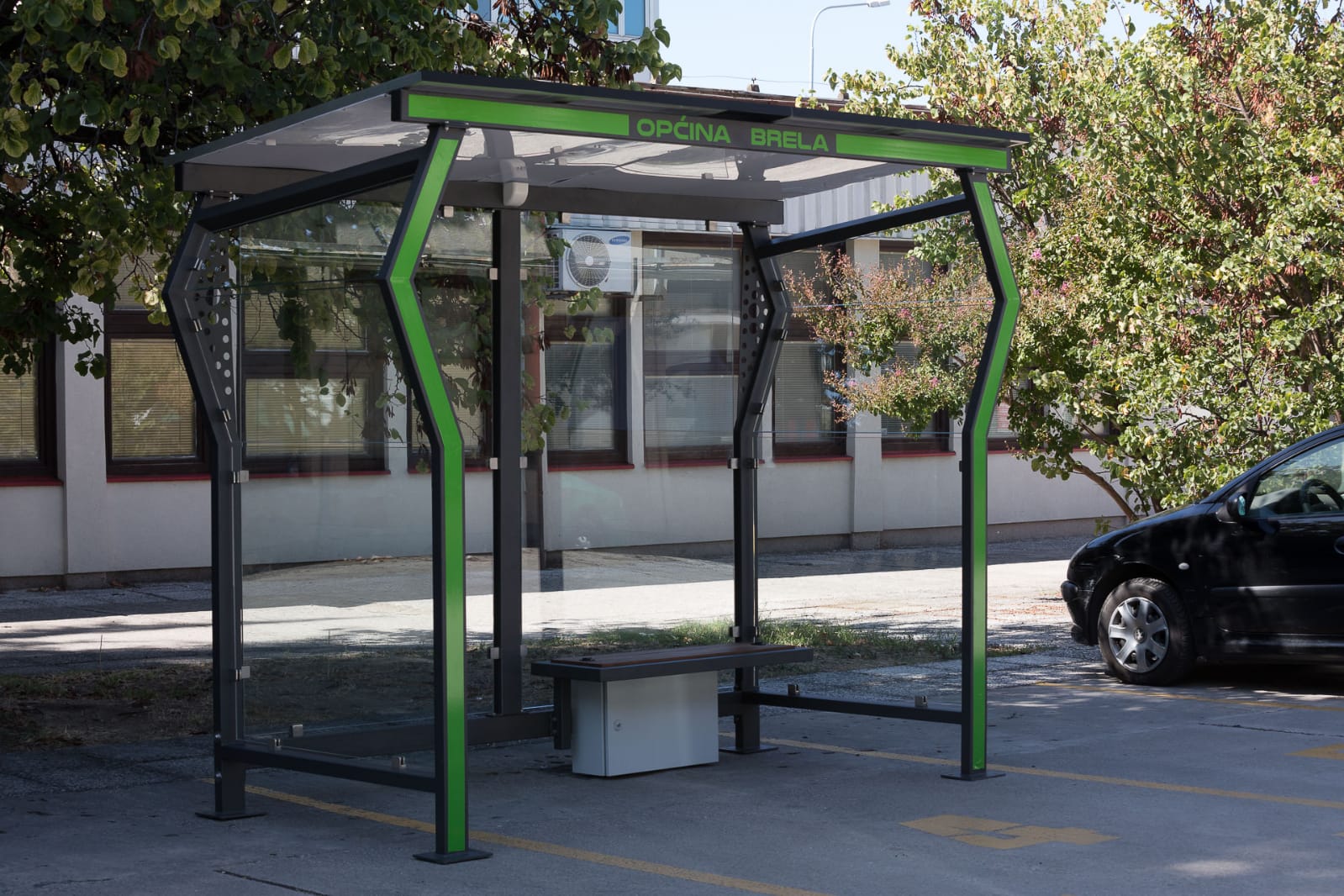
Smart Communications
Namely, Smart Communications is a young company that is engaged in the sales and service of electric scooters and everything related to new green technologies - and in Dalmatia, they cooperate with Ericsson Nikola Tesla in the field of optical infrastructure.
“We have always strived for new solutions and projects, and this solar smart bus stop project has been prepared for half a year, from organizing production at the Dicmo plant to assembling and testing in Split in the Koncar building next to TC Joker. From the very beginning, the product has attracted the attention of cities and municipalities, especially from Omis, Brela, Baska Voda, and Gradac to Ploce,” revealed Smart Communications.
The specifications of the smart bus stop are impressive.
“The MM-19 solar smart stop is a Croatian product that has launched the technological modernization of municipalities, cities, and local governments. We have implemented several smart multimedia solutions into the stop, which the locals will be able to use year-round, and, of course, tourists. With this product, we are creating new values in Croatia!
The product is characterized by the specificity of machining of a steel structure according to the standard EN 10027, which is processed in three separate phases (electroplating-cleaning, galvanizing and plastification). With our partners, companies Adria-Zinc Split and Metallux Vrgorac, after finishing the construction, we assemble and do the final work (installing solar panels, regulators, batteries, USB sockets, glass, benches ...) at Put Brodarice 2, in the Koncar plant. The FN modules we incorporate are 650W, smart MPPT 100/50 voltage regulators and Victron AGM batteries from 160Ah to 220Ah give us the power and security so that a smart solar cell can operate for up to 5 days without solar power. We have even transformed our bench seat into a unique material - cumaru wood, which is used for quality, color, and specificity in the most luxurious yachts as finishing wood for decks and benches.
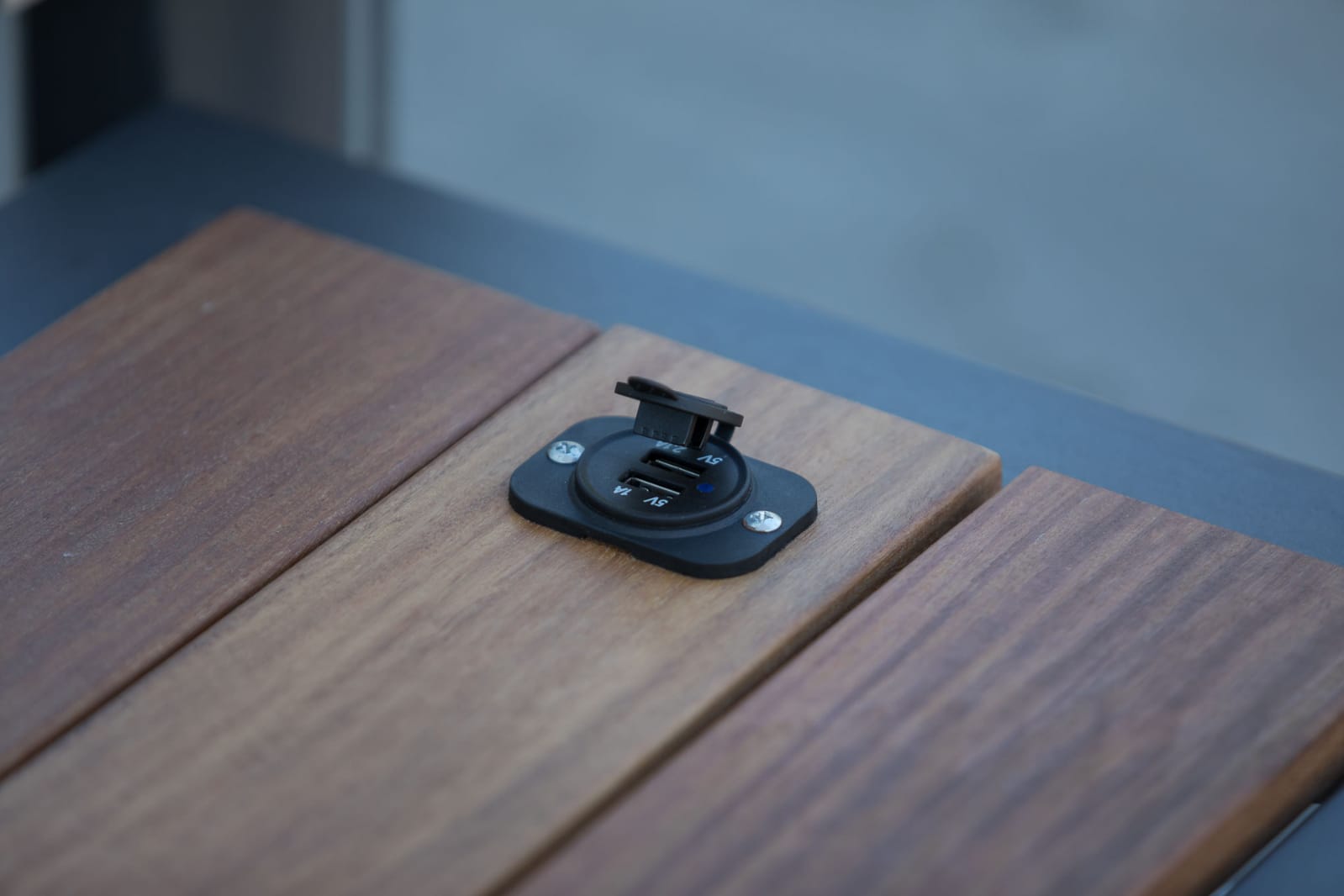
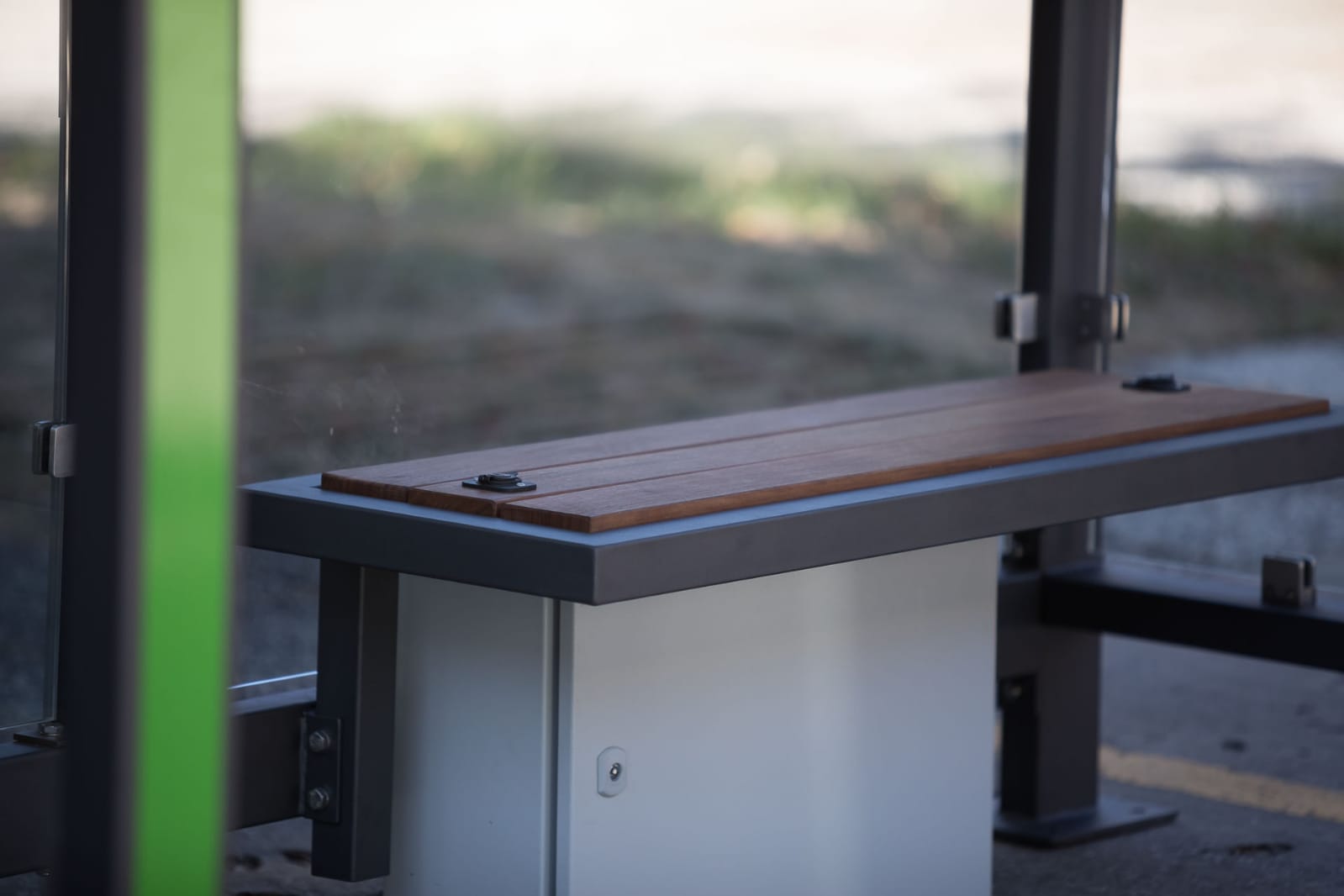
Smart Communications
All of the above gives us safety and quality, and we can provide a lifetime warranty on the construction of the station. From the beginning, we were guided by the vision of modernizing each of our municipalities and cities in Croatia, especially in tourist resorts by the sea and the coast, where tourism is the main branch of survival for the locals. We want to raise the level of service because many guests use buses as a means of transport from city to city. That means they spend a lot of time on the road waiting at bus stops. Why not make that wait more enjoyable and fun with the cozy night LED lighting, charging stations for their cell phones and tablets, free Wi-Fi, and light background music? On the LED screens, you can find out bus timetables, various information, and events happening where the smart bus stations are located.

Smart Communications
Due to its modern and quality design, it fits in with every exterior and does not disturb your view of the sea. These are several of the main features of a solar smart bus stop.
We can also offer annual maintenance for the station. This includes a free 4G signal for Hotspot Internet, a yearly security policy and monthly control, inspection and window washing. We are at your disposal for any additional information and arrangements regarding the appointment and presentation of the smart bus stop,” Smart Communications concluded.
You can see the smart bus stops at Put Brodarice 2 in Split and Garma 14 in Omis!
To read more about lifestyle in Croatia, follow TCN's dedicated page.
Eight Summer Stages in Split Area to Revitalize Cultural Heritage
September 5, 2019 - Eight summer stages in the Split area, worth 27.8 million kuna, will provide additional facilities for locals and tourist attractions.
On September 3, 2019, Minister of Regional Development and EU Funds Marko Pavic decided to finance the ITU strategic project "Open Summer Stages of the Urban Agglomeration of Split", which provides a non-refundable HRK 27.8 million from the ITU mechanism.
The project will revitalize cultural heritage and will provide additional facilities for locals and tourist attractions through the construction, renovation, and furnishing of outdoor summer stages at eight different locations. The construction, renovation and furnishing of the open summer stages, accompanying facilities and facilities for cultural and tourist purposes, will be carried out at the following locations in the cities of Solin, Trogir, Kastela and Omis and the municipalities of Klis, Dugopolje and Lecevica:
• Solin: renovation of Gradina, stage construction;
• Solin: renovation and construction of the Cultural Information Center and renovation of the square;
• Klis: remodeling two buildings and repairing the walls of Klis Fortress, 3D mapping, stage construction;
• Omis: renovation of the “Old Cemetery”, stage construction;
• Dugopolje: the summer stage near the church of Sv. Rocco;
• Kastela: renovation of the Dudan Park in Kastel Kambelovac, stage construction;
• Lecevica: renovation of the old wells in the village of Radosic, stage construction;
• Trogir: summer stage in the old town.
The project will increase the level of preservation and landscaping of these attractions, and modernize the existing facilities, while raising the quality of the cultural heritage and its long-term and sustainable use for the inhabitants of the Urban Agglomeration of Split and all visitors to the area.
The success of the project is based on the identification, activation and cooperation of local development potential with an emphasis on the efficient use of resources in planning and managed development in the area of Urban agglomeration Split.
Recall, this news comes after the City of Split has announced a competition for a new multipurpose hall for cultural and social content, which will be located in the city center. The hall should begin operating in the 2020/2021 season. The process began Monday through public consultation, according to the City.
The hall is designed as a multipurpose hall and will be able to hold cinema screenings, theater performances, cultural and musical events, conferences and congresses. It will have an independent entrance via the main staircase from the outer space, it will be accessible to disabled people and persons with reduced mobility, and will boast a capacity of 168 seats.
To read more about lifestyle in Croatia, follow TCN's dedicated page.
8.5 Million Kuna Granted to Develop Coast in Omiš, Trogir, Kaštela and Tučepi
HRTurizam reports on August 27, 2019, that based on the Decision on the allocation of funds from the Co-financing Program for Capital Projects on the Maritime Property in Split-Dalmatia County for 2019, the County Prefect Blaženko Boban signed contracts worth HRK 8.5 million with the mayor of Omiš Ivo Tomasović, Deputy Mayor of Trogir Ruža Kovačević Bilić, Deputy Mayor of Kaštela Grgica Benutic and Ante Čobrnić of Tučepi.
The city of Omiš received HRK 1.5 million for landscaping Brzet beach, the city of Trogir HRK 3 million for the construction of the breakwater of Brigi Lokvice sports harbor, and HRK 2 million to Kaštela for landscaping the Glavica bay in Kaštel Lukšić. The Municipality of Tučepi also received HRK 2 million to improve the coastal zone from the marina to Gospin creek, all with the aim of strengthening the competitiveness of Split-Dalmatia County through the development of coastal and marine infrastructure, as well as strengthening the tourist and economic resource base.
“It is well known that our County manages one-third of the total maritime domain of the Republic of Croatia. It was not easy to do all the preparatory work because only projects that have been awarded a
building permit were financed, and the projects were co-financed in the ratio of half of Split-Dalmatia County, half of the units of local self-government. In this way, together with the local self-government units, we will change the overall view of our coastal towns. Therefore, let the contracts signed today be an incentive for other local communities to participate in such county competitions,” said Blaženko Boban.
Stipe Čogelja, Head of the Maritime and Tourism Managing Board, emphasized that the County has already prepared all the relevant strategic documents for beach management, from the Tourism Capacity Plan to the Beach Management Plan, and announced the development of the Integrated Coastal Zone Management Plan foreseen by European Directives which only Šibenik-Knin County has so far.
"We are ready for a new EU financial perspective from 2021, to apply for even more funding for sustainable coastal zone management," said Čogelja.
To read more about travel in Croatia, follow TCN's dedicated page.
Former Atlantia Passenger: Why are CO Sensors Not Required on Commercial Vessels?
August 16, 2019 - As more details emerge about the fatal monoxide poisoning on a Croatian charter boat, more questions need to be asked about industry regulation.
It started out as a story about an alleged bad plate of mussels which led to the death of one Italian tourist and poisoned five others, two of whom (children) remain in intensive care.
The official investigation on the cause of death and illness quickly shifted the focus away from the restaurant and onto MY Atlantia, the charter boat the Italian group had chartered for almost 12,000 euro for a week of sailing around Dalmatia. It appears that the cause of death and illness was carbon monoxide poisoning due to an improperly installed generator on August 8, from which deadly fumes leaked into the boat's cabins. The owner, a 23-year-old from Omis and the Atlantia's 27-year-old captain, have been arrested.
Omis is in shock at the tragedy, and various people I spoke to talked of a very ordinary, hard-working family, whose only son bought Atlantia at the beginning of the year for this, his first season. And while it is natural that the focus will be on the events leading up to this tragedy, questions are already being raised not only about how such a thing could happen, but how likely it is that other such tragedies could occur. The Atlantia tragedy has focused attention on this issue, but various industry insiders have contacted me to say how they are sadly not surprised that something like this has happened, as regulation and controls are not what they perhaps should be.
I wrote an article last night called Hvar Tragedy: TripAdvisor 2018 Complaint of Noxious Fumes in Atlantia Cabin.
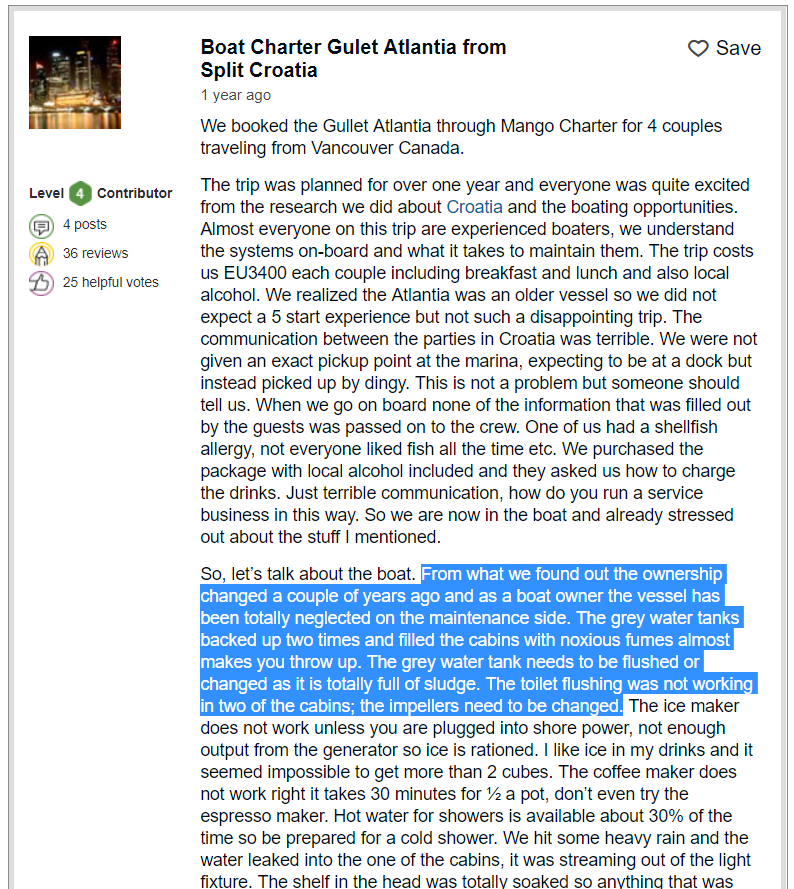
I contacted the poster, asking for more information and received a reply this morning, which surprised me. And then concerned me even more.
Hello Paul
Our situation was different but still the boat was in terrible shape. I am a boater and have a 65ft yacht so I do know something about the mechanical side of things.
During our trip the AC was not running, so the generator they had was off most of the time. I would think that if this happened at night the generator was running and the exhaust fumes were leaking in.
In our case the grey water holding tank was getting full and the water would actually back up into the aft cabin. This was terribly smelly but not a CO issue. The boat was in bad mechanical shape, just not maintained well. From my experience it would need a minimum of about 50,000USD in maintenance at the time just to patch things up.
The boat did have a bit of an old boat smell, also at some anchorages everyone was running the generators so even if your window was open it would stink like exhaust. I can understand that it could easily happen that you would dismiss the exhaust smell inside the cabin. I am just speculating here anyway.
The generator they had when we were there did not work correctly, so it must have been fixed. Whoever did this work probably dropped the ball with the venting of the exhaust.
Also, in retrospect I wonder why a CO sensor is not required on any commercial vessel. I know over here in Canada we are required to have them.
So it would appear that the noxious fumes of last year in the cabins came from a different source, but the answer got me thinking about the level of checks and controls. Croatian nautical tourism is growing rapidly, and my sailing friends tell me that more and more people with less and less experience are jumping on the bandwagon, with profit seemingly the most important factor. A snapshot of a view from an experienced sailor who has spent years working on the boats on the Croatian coast is just one excerpt from my increasingly busy inbox:
The larger story is poor regulations. Boat registries hardly do their job, you can normally pay and they check basics like the amount of fire extinguishers, not important systems like engines etc.
There are also new captains taking over these large yachts and gulets with ZERO experience. I've actually been saying since the beginning of the season that I am surprised there haven't been more serious incidents, what happened is the worst possible scenario.
Everything in the system has been made to make it as easy as possible for boats to get registered and people to get their Captain's license to fill the increase in nautical tourism. With zero experience and zero respect for basic seamanship.
Numbers, numbers, numbers. Our old friend, the Croatian tourism strategy. Numbers over quality experience.
I am no sailor, my sailing knowledge is limited, and it is in nobody's interests to sensationalise the story, but surely it is in everyone's interests to do a thorough investigation into current practices, put safety not profit at the top of the agenda, and make sure that such incidents never happen again?
TCN will invest some effort to researching this topic further in the public interest. If you have a story, expert comment, or something constructive to add (no rants of unhappy customers, please), we would to hear from you on This email address is being protected from spambots. You need JavaScript enabled to view it. Subject Sailing. Contributions will be anonymous if required


